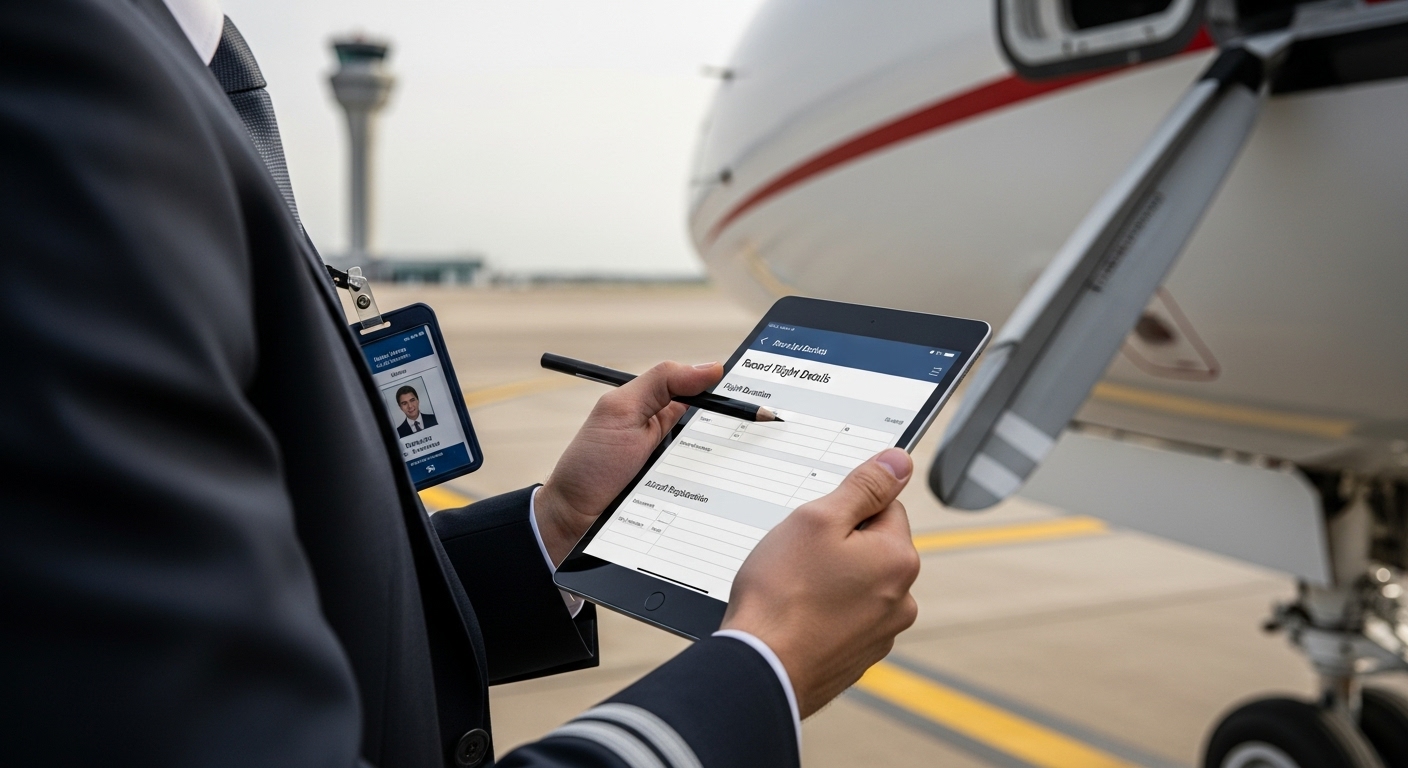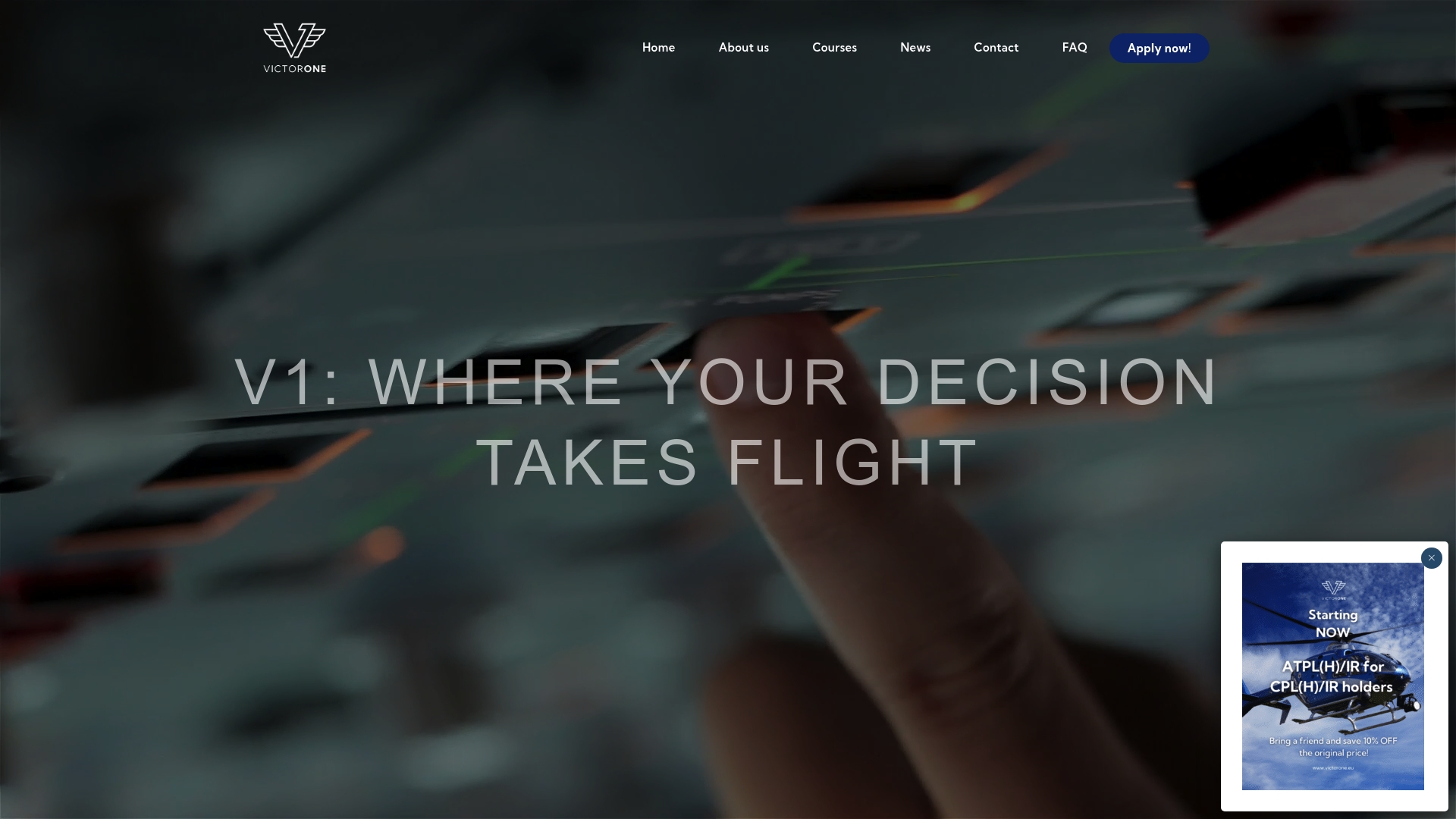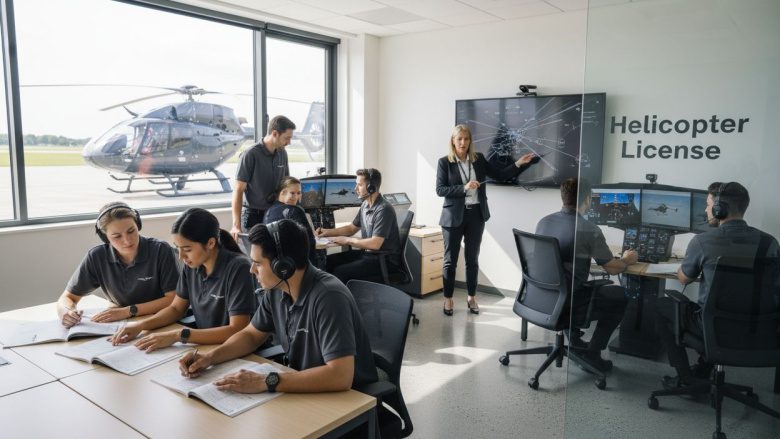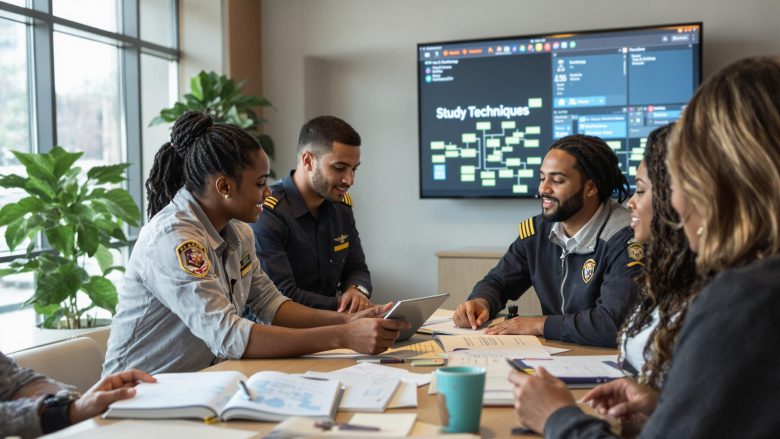Documenting your flight hours sounds simple enough for most trainee pilots. Yet missing a single key detail can hold you back from a licence or delay your career progress by months. In fact, using the right logbook and recording flight details immediately after landing is required by EASA and can affect your legal standing as a professional pilot. Most beginners focus on clocking time in the air, but the surprising reality is that your logbook habits matter just as much as your flying skills and may become the deciding factor in your aviation future.
Table of Contents
- Step 1: Gather Necessary Documentation And Tools
- Step 2: Record Flight Details After Each Flight
- Step 3: Maintain A Consistent Logging Routine
- Step 4: Validate Flight Hours With Signatures
- Step 5: Review And Adjust Records Regularly
Quick Summary
| Key Point | Explanation |
|---|---|
| 1. Use a professional logbook | A legal document that records your flight hours, essential for certifications and tracking progress. |
| 2. Record details immediately after flights | Ensures accuracy and compliance; captures fresh memories and critical information right after landing. |
| 3. Maintain a consistent logging routine | Regular documentation creates a professional narrative and ensures no details are overlooked. |
| 4. Validate entries with appropriate signatures | Official validation of flight hours by qualified individuals is crucial for legal and professional reasons. |
| 5. Regularly review and adjust records | Helps maintain accuracy and reliability, ensuring your logbook meets professional and regulatory standards. |
Step 1: Gather Necessary Documentation and Tools
Successfully logging flight hours begins with meticulous preparation and gathering the right documentation. This initial step is crucial for maintaining accurate records that will support your professional aviation career and help you track your progress towards various pilot certifications.
The foundation of your flight hour documentation is a professional pilot logbook. Your logbook is more than just a record keeper – it is a legal document that validates your flying experience. Choose a logbook specifically designed for aviation professionals, preferably one that complies with EASA regulations and provides comprehensive sections for detailed flight recordings.
When selecting your logbook, prioritise formats that allow you to record critical flight details such as aircraft registration, flight duration, type of flying performed, and conditions encountered. Some pilots prefer traditional hardcopy logbooks, while others opt for digital tracking systems. Digital logbooks offer advantages like automatic calculations, backup capabilities, and easier long-term storage.
Essential Documentation to Prepare
Before you start logging hours, gather these key documents:
- Pilot licence number
- Medical certificate
- Aircraft type ratings
- Personal identification documents
- Training records from flight schools or instructors
Each document serves a specific purpose in validating your flight experience. Your pilot licence number, for instance, is a unique identifier that will be referenced in every flight hour entry. The medical certificate confirms your fitness to fly, which is crucial for professional aviation progression.
Precision matters when documenting flight hours. According to EASA guidelines, every entry must be legible, accurate, and verifiable. Take time to develop a systematic approach to recording your flights. Use a consistent format, write clearly, and double-check entries for accuracy.
Remember that your logbook is not just an administrative requirement – it is a professional narrative of your aviation journey. Treat each entry with the same care and attention you would bring to flying an aircraft. By establishing strong documentation practices from the start, you set yourself up for smooth licensing processes and career advancement in the aviation industry.
The following table summarises the essential documents and tools you need to prepare before starting the process of logging your flight hours, along with their purposes.
| Document/Tool | Purpose |
|---|---|
| Professional pilot logbook | Legal record of flight hours, required for certifications |
| Pilot licence number | Unique identifier for all flight hour entries |
| Medical certificate | Confirms pilot fitness to fly |
| Aircraft type ratings | Validates eligibility for specific aircraft types |
| Personal identification documents | Supports verification and legal standing |
| Training records | Evidence of instruction and achievements |
| Digital logbook (optional) | Automatic calculations, backups, and easier long-term storage |
Step 2: Record Flight Details After Each Flight
Recording flight details immediately after landing is a critical skill that separates professional pilots from casual flyers. This step ensures your flight hours are accurately documented, legally compliant, and professionally tracked. The moments immediately following a flight are crucial for capturing precise information while your memory remains fresh and details are vivid.
Immediately upon parking the aircraft, take out your logbook and begin recording the flight details. Timing is essential – waiting too long can lead to forgotten nuances or inaccurate reporting. Professional pilots develop a post-flight routine that includes documentation as a standard practice, treating it with the same importance as pre-flight checks.
Your flight entry should be comprehensive and include specific information that validates your flying experience. Start with fundamental details such as the date, aircraft registration number, and total flight time. Be meticulous about recording the exact flight duration, noting block-to-block time (from engine start to engine shutdown) and pure flying time. This precision becomes critical when calculating your total flight hours for licensing and career progression.
Critical Information to Document
Each flight log entry should capture these essential elements:
- Departure and arrival locations
- Aircraft type and registration
- Flight conditions (VFR/IFR)
Beyond basic flight details, include supplementary information that demonstrates the complexity and diversity of your flying experience. Note specific conditions encountered during the flight, such as night flying, instrument conditions, or complex manoeuvres. These annotations provide context to your flight hours and can be significant when demonstrating your skill level to future employers or certification boards.

According to aviation documentation standards, your entries must be legible, accurate, and verifiable. Use consistent handwriting or digital entry methods. If using a digital logbook, ensure immediate synchronisation and backup to prevent potential data loss. Some pilots recommend taking a quick photograph of critical flight instruments or navigation logs to cross-reference with logbook entries, providing an additional layer of verification.
Develop a personal post-flight ritual that integrates logbook documentation seamlessly into your flying routine. The most successful pilots treat their logbooks as living documents that tell the story of their aviation journey, not just administrative records. By maintaining rigorous, immediate, and detailed documentation, you transform your logbook from a simple record into a professional portfolio of your flying expertise.
Step 3: Maintain a Consistent Logging Routine
Developing a consistent logging routine transforms flight hour documentation from a mundane task into a strategic professional practice. Successful pilots understand that systematic record-keeping is not just about compliance, but about building a comprehensive narrative of their aviation experience.
Create a dedicated time and space for logging your flight hours. Many professional pilots recommend establishing a routine immediately after returning from a flight or at the end of each flying day. This approach ensures that details remain fresh in your memory and reduces the likelihood of omitting critical information. Some pilots keep their logbook in a specific location near their flight gear, making it a natural part of their post-flight process.
Technology can be a powerful ally in maintaining consistency. Consider using digital logging applications or cloud-based systems that allow for immediate entry and automatic calculations. These tools can help track your flight hours across different aircraft types, manage currency requirements, and provide instant summaries of your flying experience. However, always maintain a backup method – whether that means keeping a physical logbook or maintaining duplicate digital records.
Strategies for Reliable Documentation
Establish a personal checklist for your logging routine that includes:
- Verifying all flight details before final entry
- Cross-checking instrument readings
- Confirming time calculations
Consistency extends beyond just recording hours. Pay attention to the quality and detail of your entries. Precision matters. Include notes about specific conditions, training exercises, or unusual circumstances encountered during the flight. These additional details can prove invaluable when demonstrating your experience for future ratings or job applications.
According to professional aviation documentation guidelines, your logging routine should become as automatic as your pre-flight checks. Develop a mindset where documentation is an integral part of your flying experience, not a separate administrative task. Some experienced pilots recommend setting a specific time each week to review and consolidate their flight logs, ensuring no details are missed and all calculations are accurate.
Remember that your logbook is more than just a record – it is a professional portfolio that tells the story of your aviation career. By maintaining a consistent, detailed, and systematic logging routine, you create a valuable document that supports your professional development and demonstrates your commitment to excellence in aviation.
![]()
Step 4: Validate Flight Hours with Signatures
Validating flight hours through proper signatures is a critical step in maintaining the legal and professional integrity of your pilot logbook. This process transforms your personal record into an officially recognized document that can substantiate your flying experience for licensing, ratings, and career advancement.
The signature validation process requires careful attention to detail and professional communication. Immediately after completing a flight, approach the appropriate authority who can verify your flight time. This might be your flight instructor, chief pilot, or another qualified pilot with the necessary credentials to authenticate your log entry. Professional pilots understand that these signatures are more than mere formalities – they are official attestations of your flying experience.
When seeking signatures, prepare your logbook and be ready to provide additional documentation if required. Ensure that the person signing has direct knowledge of the flight and can confirm the details you have recorded. The signature should include the individual’s printed name, licence number, and their official signature. Some pilots find it helpful to have a brief conversation about the flight, allowing the signatory to verify the details more comprehensively.
Essential Signature Requirements
Each validated entry should include:
- Full name of the signatory
- Licence or certification number
- Date of signature
- Contact information
Understand that different aviation authorities may have specific requirements for signature validation. According to EASA guidelines, the validation process must be clear, legible, and verifiable. For those interested in understanding the broader context of professional flying requirements, learn more about flight duty time limitations to complement your knowledge.
Be proactive and professional in your approach to signature validation. If you are working with multiple instructors or flying in different contexts, maintain a consistent method of documentation. Some pilots keep a separate section in their logbook for signatures, making it easy for authorized personnel to review and validate their entries.
Remember that signature validation is not just a bureaucratic step – it is a professional courtesy that demonstrates your commitment to accuracy and transparency in aviation. By treating each signature as an important professional interaction, you build relationships and credibility within the aviation community. Your meticulously validated logbook becomes a testament to your flying experience and professional standards.
Step 5: Review and Adjust Records Regularly
Regular review and adjustment of flight records is a critical practice that separates professional pilots from casual flyers. This step is not merely an administrative task, but a strategic approach to maintaining the accuracy and reliability of your professional aviation documentation. Precision in record-keeping can significantly impact your future licensing, career opportunities, and professional credibility.
Establish a consistent schedule for reviewing your flight logs, ideally on a monthly or quarterly basis. During these review sessions, meticulously cross-reference your handwritten or digital entries with supporting documentation such as flight strips, navigation logs, and electronic flight records. Look for potential discrepancies in total flight times, aircraft types, or specific operational conditions that might require clarification or correction.
Digital tools can streamline this review process dramatically. Many modern pilot logbook applications offer automatic calculation features, highlighting potential errors or inconsistencies. These tools can generate summary reports that make it easy to spot trends, track total flight hours across different aircraft types, and ensure you are meeting specific rating or licensing requirements.
Critical Review Strategies
During your review, focus on these key aspects:
- Verifying total flight hours against individual flight entries
- Checking currency requirements for different aircraft types
- Confirming all entries have proper signatures and validation
Professional pilots understand that documentation is as important as flying skills. Small errors can compound over time, potentially creating significant challenges when applying for advanced ratings or job opportunities. Some experienced pilots recommend keeping a separate cross-reference document where they note any corrections or adjustments made during their review process.
According to EASA documentation standards, your flight records must be not just accurate, but also demonstrably verifiable. For pilots looking to expand their understanding of professional record-keeping, our guide on understanding flight duty time limitations provides additional context for maintaining comprehensive aviation documentation.
Remember that your logbook is more than a record – it is a professional portfolio that tells the story of your aviation journey. By implementing a rigorous, systematic review process, you transform your flight documentation from a simple administrative requirement into a strategic tool for professional development. Treat each review as an opportunity to reflect on your flying experience, identify areas for improvement, and ensure your records stand up to the most stringent professional scrutiny.
This checklist table outlines the key review and verification steps professional pilots should follow regularly to ensure the accuracy and compliance of their logged flight records.
| Review Step | What to Check |
|---|---|
| Verify total flight hours | Ensure sums match individual flight entries |
| Review currency requirements | Confirm compliance for all aircraft types you operate |
| Confirm signatures and validation | Check every entry has the appropriate signature and details |
| Cross-reference supporting documentation | Compare with flight strips, navigation logs, and electronic records |
| Identify and correct discrepancies | Rectify any found errors in times, aircraft types, or operational notes |
| Regularly back up digital logbooks | Prevent data loss by using cloud or physical backups |
| Note adjustments in separate cross-reference doc | Maintain a record of corrections for future reference |
Take Control of Your Pilot Career with Professional Aviation Training
Are you finding the process of logging flight hours overwhelming or uncertain? This article showed how essential meticulous record-keeping, official validation, and routine accuracy are for your advancement in aviation. Many pilots struggle with documentation anxiety, unclear licensing steps, and the challenge of meeting strict EASA standards. If you want to gain true confidence in your flight records and prepare for the next leap in your career, the right educational support is key.

Take your aviation knowledge and professional development further with VictorOne.eu. Our platform offers fully online, EASA-approved pilot training designed for aspiring pilots like you. Unlock detailed theory courses, interactive resources, and direct support that help you master not just logging requirements, but every phase of your licensing journey. Ready to transform your flying experience and prepare for your ATPL or ICAO exams? Visit VictorOne.eu now and discover everything you need for a flawless and future-proof pilot portfolio. For tips on record-keeping and licensing progression, explore our insights on Understanding Flight Duty Time Limitations. Start securing your aviation career today.
Frequently Asked Questions
How can I ensure accurate flight hour logging?
To ensure accurate flight hour logging, use a professional pilot logbook and record flight details immediately after each flight. Double-check entries for legibility and accuracy, including total flight times and conditions encountered during the flight.
What should I include in my flight log entries?
Log entries should include essential details such as the date, aircraft registration number, total flight time, departure and arrival locations, and flight conditions (VFR/IFR). Include notes on specific circumstances, such as night flying or unusual maneuvers to demonstrate the diversity of your flying experience.
Why is signature validation important for my logbook?
Signature validation is crucial as it transforms your logbook into an officially recognised document that substantiates your flying experience. It confirms the authenticity of your log entries through the endorsements of a qualified individual, which is essential for licensing and career advancement.
How often should I review my flight records?
You should review your flight records regularly, ideally on a monthly or quarterly basis. This allows you to cross-reference entries with supporting documentation, verify total flight hours, check for proper signatures, and ensure compliance with licensing requirements.


